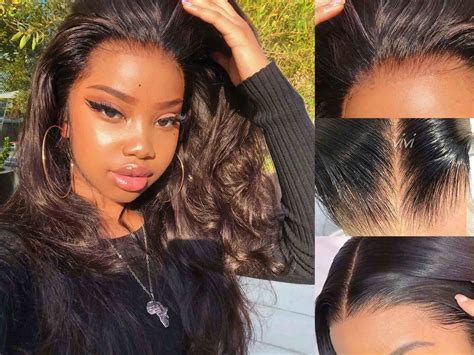The Realm of Natural Looking Wigs: A Booming Industry
The global wig market is projected to reach USD 12.42 billion by 2028, exhibiting a stellar 6.9% CAGR during the forecast period (2021-2028), as per a report by Grand View Research. This remarkable growth is attributed to the rising demand for natural looking wigs that mimic the texture, volume, and style of real hair.

Synthetic vs. Human Hair: Understanding the Options
Synthetic Wigs:
– Affordable and easier to style than human hair wigs
– Limited lifespan of 6-12 months
– May appear less natural than human hair wigs
Human Hair Wigs:
– Premium quality, offering a more natural look and feel
– Can last up to 3 years with proper care
– More expensive than synthetic wigs
Factors Driving the Surge in Natural Looking Wig Demand
Hair Loss Problems: A Common Issue
- According to the American Academy of Dermatology, approximately 50 million women in the United States experience hair loss.
- Alopecia areata, a condition that causes hair loss in patches, affects 6.8 million people in the US alone.
Fashion and Style: Expressing Individuality
- Wigs have become an integral part of fashion, allowing individuals to experiment with different hairstyles and colors.
- Celebrities and fashion icons often use wigs to enhance their looks and stay on-trend.
Medical Reasons: Hair Restoration
- Cancer treatments such as chemotherapy often result in hair loss.
- Wigs provide a natural-looking hair solution for patients undergoing treatment.
Benefits of Natural Looking Wigs
Enhanced Confidence and Self-Esteem
- Wigs can conceal hair loss and boost self-confidence.
- They allow individuals to feel comfortable and secure in their appearance.
Concealment of Hair Imperfections
- Wigs can cover up scalp scars, thinning hair, and other hair imperfections.
- They provide a discreet and effective solution for those seeking to hide hair problems.
Versatility and Convenience
- Wigs offer tremendous versatility, allowing for quick and easy hairstyle changes.
- They can be washed, styled, and cut to suit personal preferences.
Comparison of Pros and Cons
| Feature | Synthetic Wigs | Human Hair Wigs |
|---|---|---|
| Price | Affordable | Expensive |
| Lifespan | 6-12 months | Up to 3 years |
| Naturalness | Less natural | More natural |
| Styling | Easier | More challenging |
Market Segmentation and Growing Niches
Segmentation by Type:
– Full wigs
– Lace wigs
– Frontal wigs
– Clip-in extensions
Emerging Niches:
– Custom-made wigs: Tailored to fit individual head shapes and hair textures.
– Heat-resistant wigs: Suitable for styling with heat tools.
– Medical-grade wigs: Designed for patients undergoing medical treatments.
Future Trends and Innovation in Natural Looking Wigs
Personalized Wigs: Embracing Diversity
- Advancements in technology are leading to personalized wigs that match hair density, texture, and color.
- 3D scanning and AI algorithms enable the creation of custom-fit wigs.
Sustainable and Eco-Friendly Wigs
- Environmental consciousness is driving the demand for eco-friendly wigs.
- Wigs made from recycled materials and biodegradable fibers are gaining popularity.
Integration of Smart Technologies
- Smart wigs are emerging, equipped with sensors that detect scalp temperature and humidity.
- They can adjust ventilation and cooling to enhance comfort and prevent scalp irritation.
Conclusion
Natural looking wigs have transformed the hair industry, providing a solution for hair loss, fashion expression, and medical needs. With ongoing innovation and advancements, the market is expanding rapidly. By embracing personalization, sustainability, and smart technologies, manufacturers can cater to the diverse needs of wig wearers, empowering them with enhanced confidence and self-esteem.
